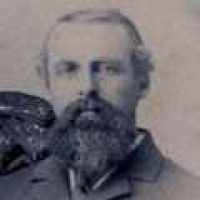John Ingram son in law DAVID JONES
David Jones was born March 20, 1820 at Radnorshire, Wales to Joseph Jones and wife.
He married Mary Ingram on September 26, 1846 at Radnorshire, Wales.
The couple had 2 children at Radnorshire, Wales: Evan Jones (born December 27, 1845, d July 11, 1848 Coshocton, Ohio) and
David (b February 11, 1847, d February 1934 Ohio).
The family of four left Wales in mid 1847 to emigrate to Ohio where four more children were born:
Sarah Ann (b February 27, 1849 Coshocton, Ohio, married Haneline Livingston Lawrence 1873, d February 1934 Coshocton, Ohio);
John (b February 10, 1851 Coshocton, Ohio, d 1926 probably Ohio);
Phineas (b July 23, 1853 Guernsey, Ohio, d November 12, 1854 Guernsey, Ohio) and
Elizabeth J (b June 11, 1858 Wheeling, Guernsey, Ohio, married Uriah Newton Lawrence 1878, d January 10, 1938 Bird's Run, Wheeling, Guernsey, Ohio).
Family found in the 1850 census at Oxford, Coshocton, Ohio: David Jones 30, farmer from Wales; Mary 26 born in Wales; David 4 born in Wales; Sarah A born at Ohio.
Found in the 1860 census at Bird's Run, Wheeling, Guernsey, Ohio: David Jones 40, Mary Jones 37, Sarah A Jones 11, John Jones 9, Elizabeth J Jones 2.
Found in the 1870 census at Knox, Guernsey, Ohio: David Jones 50, Mary Jones 46, David Jones 23, Sarah A Jones 21, John Jones 18, Elizabeth Jones 12.
Found in the 1880 census at Bird's Run, Wheeling, Guernsey, Ohio: David Jones 60, Mary Jones 56, David Jones 33, John Jones 29.
David Jones died February 1, 1899 at Wheeling, Guernsey, Ohio and was buried at the Worthing Cemetery, Wheeling, Guernsey, Ohio.












